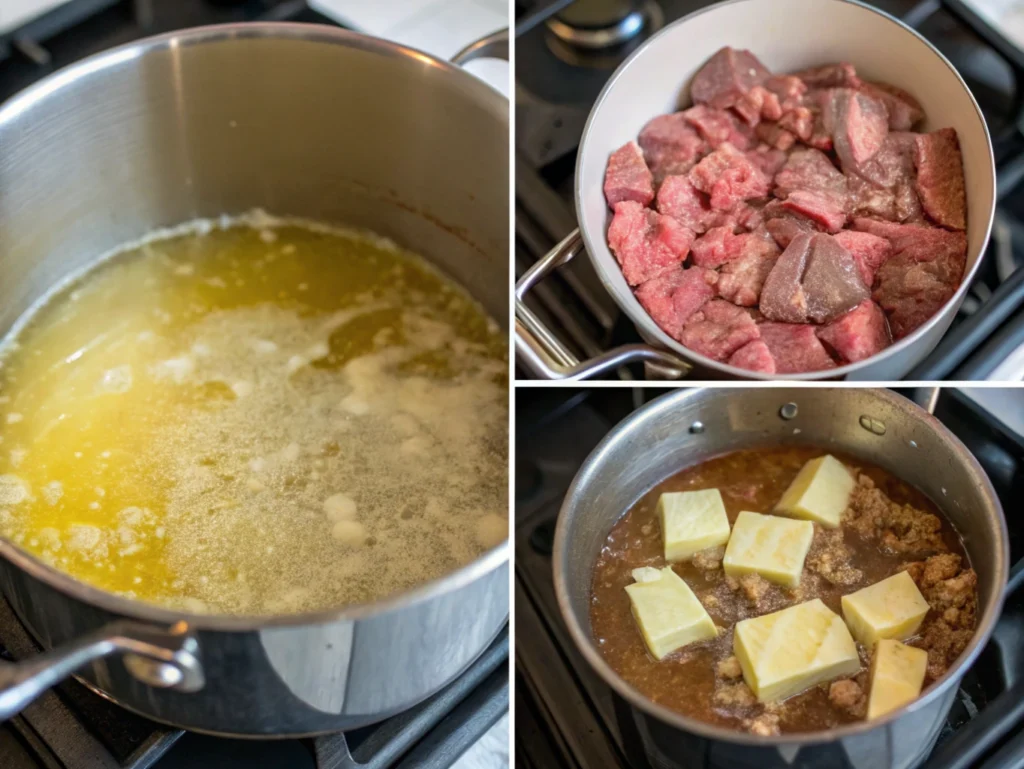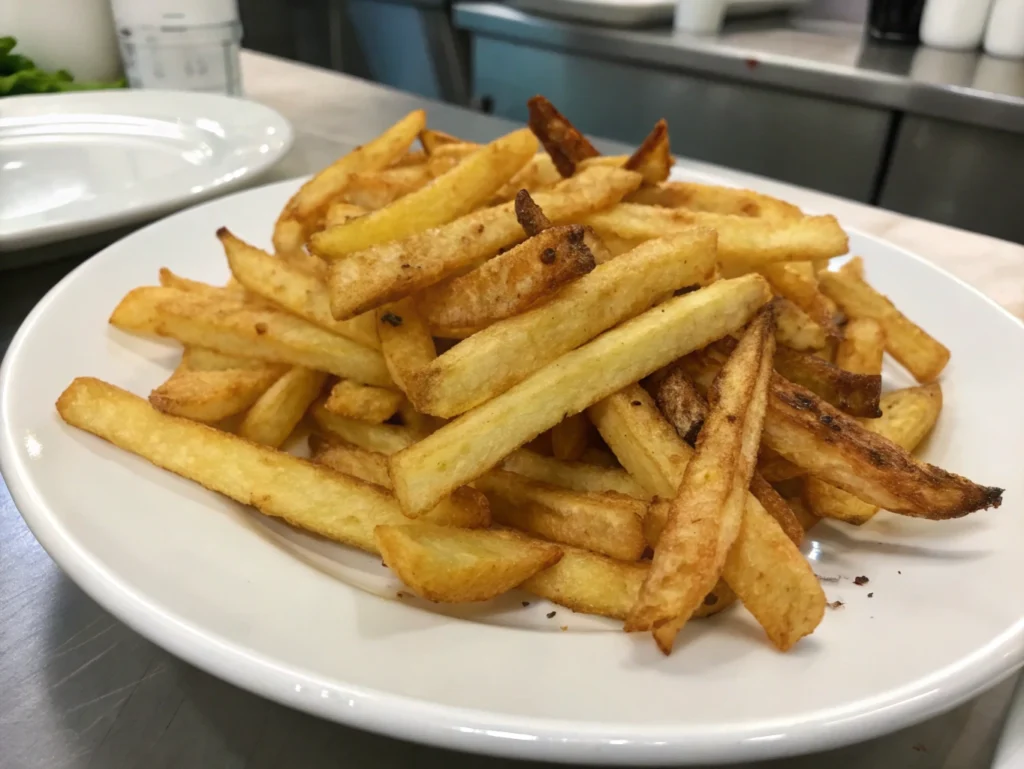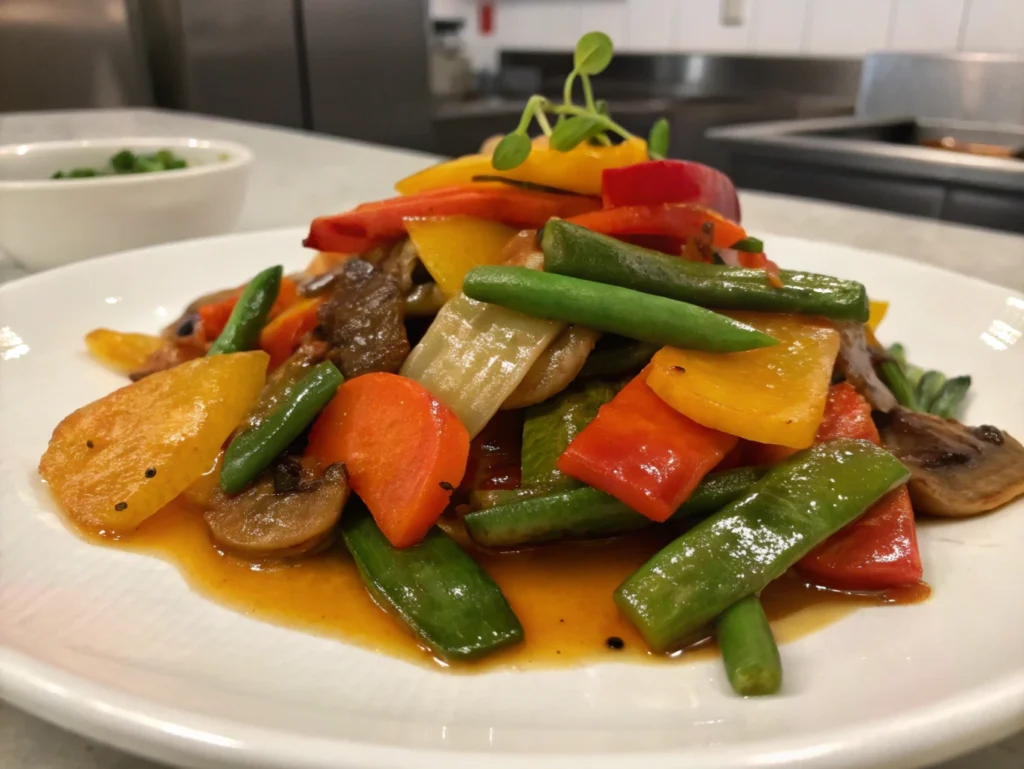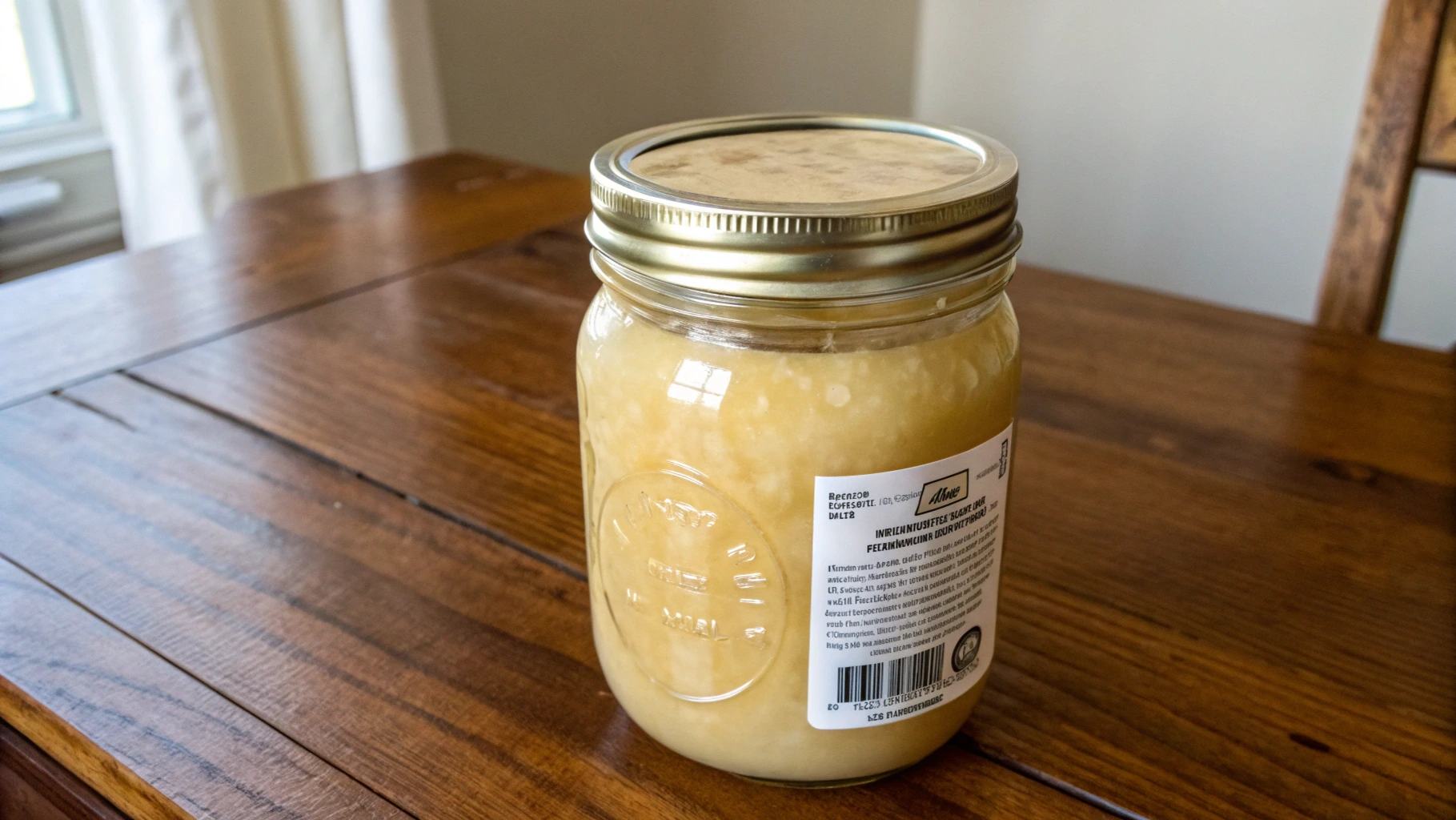Beef tallow, a rendered form of beef fat, has long been a staple in traditional cooking. It’s a versatile, nutrient-dense fat that enhances the flavor, texture, and richness of a variety of dishes. Whether you’re a seasoned cook or someone curious about exploring this old-world ingredient, you’re in the right place! In this article, we’ll dive into everything you need to know about beef tallow, from its history and health benefits to creative ways to use it in your favorite recipes. Let’s get started!
What is Beef Tallow?
Beef tallow might sound exotic, but it’s simply rendered beef fat that’s been purified for cooking and other uses. This humble ingredient, celebrated for its longevity and nutritional benefits, is making a comeback in modern kitchens.
Understanding Beef Tallow
Beef tallow is created by heating beef fat to separate the pure fat from impurities like water and protein. The result is a smooth, creamy fat that has been used for centuries in cooking, skincare, and even candle-making. Tallow was a cornerstone of traditional cooking methods, especially before the advent of vegetable oils.
Its appeal lies in its versatility. Unlike other fats, beef tallow has a high smoke point (about 400°F/200°C), making it perfect for frying, roasting, and sautéing without breaking down and releasing harmful compounds.
Nutritional Benefits of Beef Tallow
Beef tallow isn’t just delicious—it’s surprisingly nutritious! This animal fat contains essential vitamins, including fat-soluble vitamins A, D, E, and K. These vitamins are crucial for bone health, immune function, and maintaining good vision.
Moreover, beef tallow is rich in conjugated linoleic acid (CLA), a fatty acid with potential anti-inflammatory and weight management benefits. Its balance of saturated and monounsaturated fats makes it a stable and heart-healthy choice when consumed in moderation.
Why Use Beef Tallow in Cooking?
Beef tallow is more than just an old-fashioned cooking fat—it’s a game-changer in the kitchen. Its unique qualities make it a must-have for both everyday cooks and culinary enthusiasts alike. So, why should you use beef tallow in cooking? Let’s break it down.
Flavor and Texture Enhancement
Beef tallow is renowned for its ability to boost the flavor of dishes. Unlike neutral oils, tallow adds a rich, savory depth to your recipes that can’t be replicated. For example, using tallow to fry potatoes or sauté vegetables infuses them with an irresistible golden-brown crust and a hint of beefy goodness.
Not only does beef tallow enhance taste, but it also improves texture. Whether you’re frying chicken or baking a pie crust, tallow’s solid-at-room-temperature consistency makes it perfect for achieving crispy exteriors and flaky layers.
Versatility in Recipes
If you’re wondering how to use beef tallow in recipes, the answer is: just about anywhere! Beef tallow is a versatile fat that adapts beautifully to a range of cooking methods. Use it to fry, roast, grill, or even bake. Thanks to its high smoke point, tallow remains stable at high temperatures, making it ideal for deep-frying your favorite foods without burning.
Additionally, beef tallow can be a great substitute for butter, lard, or vegetable oil in savory dishes. Whether you’re making a stir-fry, whipping up some gravy, or roasting vegetables, tallow is up for the task.
How to Render and Store Beef Tallow at Home
Making your own beef tallow at home is not only economical but also rewarding. The process is straightforward, and once you’re done, you’ll have a stash of high-quality cooking fat to elevate your recipes.
Step-by-Step Guide to Rendering Beef Tallow

- Sourcing the Beef Fat: Start by sourcing high-quality beef fat, often called “suet,” from your butcher or local grocery store. Grass-fed beef fat is preferred for its superior flavor and nutritional profile.
- Preparing the Fat: Cut the fat into small pieces or grind it for quicker rendering. This step ensures even cooking and maximum yield.
- Cooking the Fat: Place the fat in a large pot or slow cooker and heat it over low heat. Stir occasionally to help the fat melt evenly. Patience is key here—rushing the process can lead to burnt tallow.
- Straining the Tallow: Once the fat is fully rendered and liquid, strain it through a fine mesh sieve or cheesecloth to remove any impurities.
- Cooling and Storing: Pour the filtered liquid into a heatproof container and let it cool to room temperature. As it cools, the tallow will solidify into a creamy white consistency.
Storage and Shelf Life Tips
Beef tallow is incredibly shelf-stable when stored properly. To keep it fresh for months:
- Use an airtight container to prevent contamination.
- Store it in a cool, dark place, such as a pantry or refrigerator.
- For longer storage, freeze tallow in small portions for easy use later.
Recipes Featuring Beef Tallow

Using beef tallow in your cooking can elevate dishes to a whole new level. From frying to baking, this versatile fat adds incredible depth and flavor. If you’ve been curious about how to use beef tallow in recipes, these delicious ideas will inspire you to start experimenting today.
Savory Dishes

Beef tallow is a fantastic choice for frying and sautéing, thanks to its high smoke point and rich flavor. Here are a couple of savory ideas:
- Crispy French Fries: Replace your usual frying oil with beef tallow for the crispiest, most flavorful fries you’ve ever tasted. The tallow gives them a light, golden finish and a subtle umami punch.
- Sautéed Vegetables: A spoonful of tallow can transform simple vegetables like carrots, zucchini, or green beans. It adds a buttery richness that makes every bite irresistible.
For more inspiration, check out our guide to Southern cornbread, where beef tallow plays a starring role: Southern Cornbread Recipe Using Beef Tallow.
Baking with Beef Tallow
You might not think of beef tallow as a baking ingredient, but it works wonders in savory pastries and breads:
- Pie Crusts: Substitute tallow for butter or lard in your pie crust recipe. The result? A flaky, melt-in-your-mouth crust with a subtle savory note.
- Rustic Bread: Add a dollop of beef tallow to your bread dough for a softer crumb and richer flavor. It’s a simple way to elevate homemade bread.
Beef Tallow in Sauces and Stocks
Want to create deeply flavorful sauces and stocks? Beef tallow is your secret weapon:
- Rich Gravies: Use a bit of tallow as the fat base for your gravy. It adds depth and ties the flavors together beautifully.
- Hearty Broths: Stir a spoonful of beef tallow into your beef or vegetable stock for a velvety finish that’s full of character.
Tips for Using Beef Tallow Effectively
When working with beef tallow, a few handy tips can make all the difference. Here’s how to maximize its potential in your kitchen.
Balancing Flavors
Although beef tallow is flavorful, it’s important to pair it thoughtfully with other ingredients:
- Use Complementary Spices: Herbs like rosemary, thyme, and sage enhance tallow’s natural richness.
- Avoid Overpowering Ingredients: Tallow shines best in simple dishes. Overloading your recipes with bold flavors can mask its unique profile.
Choosing the Right Cooking Method
The method you choose to cook with beef tallow can affect the final dish:
- High-Heat Cooking: Thanks to its high smoke point, beef tallow is ideal for frying, roasting, and searing.
- Slow Cooking: Incorporate it into braises or stews to create a silky texture and hearty depth.
With these tips and recipes, you’re well on your way to mastering how to use beef tallow in recipes. Want more ideas? Check out our Chicken Fried Rice Recipe for a creative twist using tallow!
Where to Buy or Source Beef Tallow
Getting your hands on quality beef tallow is easier than you might think. Whether you prefer the convenience of store-bought products or the satisfaction of making it at home, there are plenty of options to suit your needs.
Commercial Sources
If you’re short on time, purchasing beef tallow from a store or online retailer is a great option. Many supermarkets carry pre-rendered beef tallow in the cooking oil or specialty foods aisle.
- Online Retailers: Websites like Amazon, Thrive Market, and ButcherBox offer high-quality tallow, often from grass-fed cows for a purer taste and better nutrition.
- Farmers’ Markets: Local farmers and butchers often sell fresh, locally sourced beef tallow. This option not only supports local businesses but also ensures a fresher product.
When shopping for tallow, check labels for terms like “organic,” “grass-fed,” or “minimally processed” to ensure you’re getting the best quality.
Making Your Own
If you’re up for a DIY project, rendering your own beef tallow is simple and rewarding. By following the steps outlined earlier, you can create a fresh, customizable fat source for your cooking needs. Making it at home also allows you to control the quality of the ingredients, ensuring the final product is free from additives or preservatives.
Whether you buy or make your tallow, experimenting with how to use beef tallow in recipes will open up a world of flavor and creativity in your kitchen.
FAQs About Using Beef Tallow in Recipes
Still have questions about beef tallow? You’re not alone! Let’s tackle some of the most common queries about this versatile ingredient.
Is Beef Tallow Healthy Compared to Other Fats?
Yes, beef tallow is a nutritious choice when used in moderation. It contains a balanced mix of saturated and monounsaturated fats, along with fat-soluble vitamins like A, D, and K. Its natural composition makes it a better alternative to processed vegetable oils.
Can You Use Beef Tallow for Desserts?
While it’s most popular in savory dishes, beef tallow can also shine in baking. It works well in pie crusts, biscuits, and even rustic breads. Its mild flavor makes it a great substitute for butter or lard in many recipes.
How Long Can You Store Beef Tallow?
Properly stored, beef tallow can last for months. Keep it in an airtight container in a cool, dark place. For longer storage, refrigerate or freeze it to maintain its freshness.
Does Beef Tallow Have a Strong Beef Flavor?
Surprisingly, no! High-quality tallow has a mild, neutral flavor that complements many dishes without overpowering them.
What’s the Best Way to Incorporate Beef Tallow into Daily Cooking?
Start small by using it to sauté vegetables, fry eggs, or roast meats. Once you get a feel for its versatility, you can explore more creative uses, like baking or adding it to soups and sauces.
With this guide, you now have all the tools to explore how to use beef tallow in recipes effectively and creatively. From savory meals to unexpected baking applications, beef tallow is an ingredient worth celebrating. For more kitchen inspiration, don’t forget to check out our collection of delicious recipes at DeliciouRecipes.

